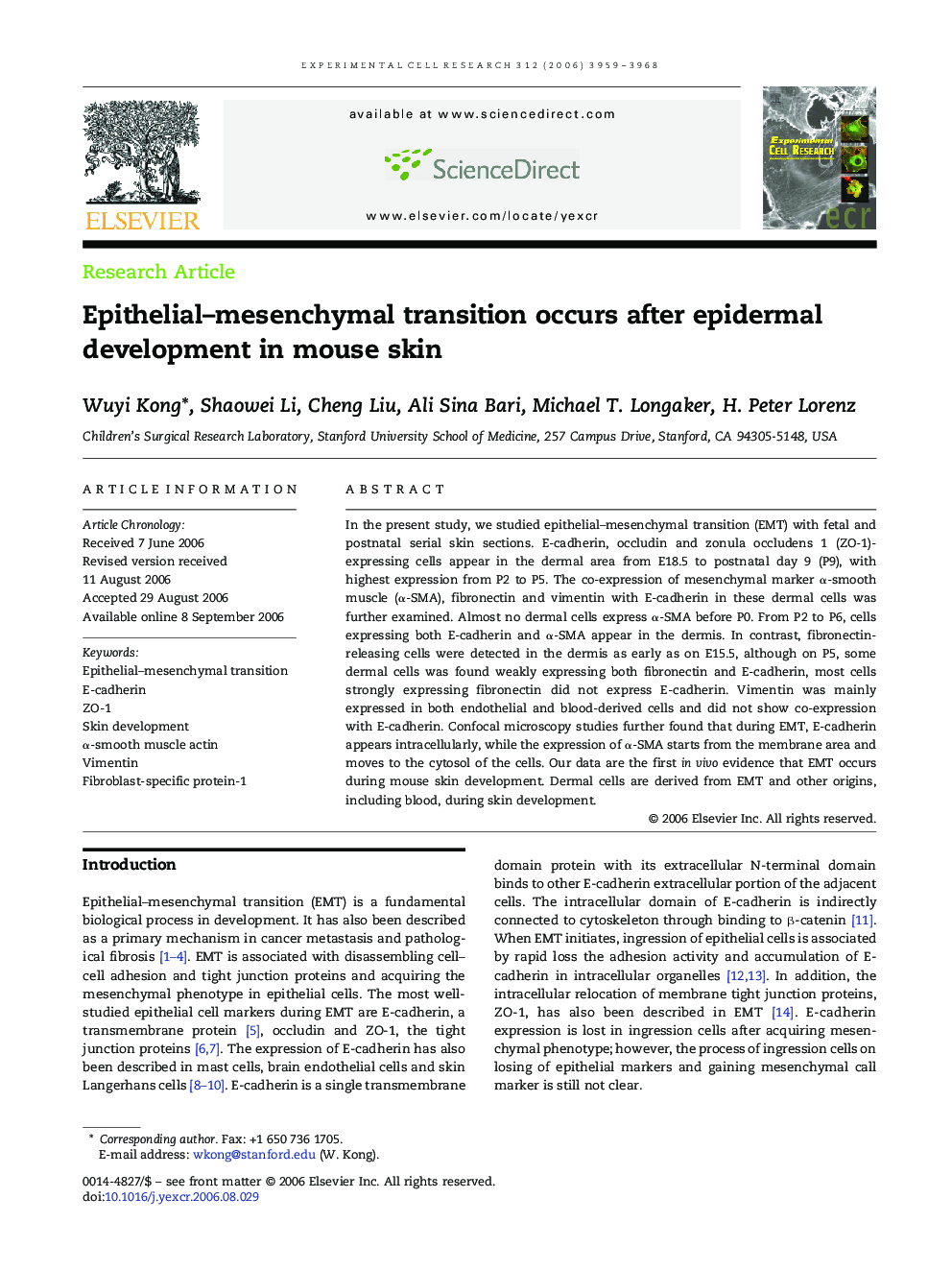| کد مقاله | کد نشریه | سال انتشار | مقاله انگلیسی | نسخه تمام متن |
|---|---|---|---|---|
| 2132785 | 1086716 | 2006 | 10 صفحه PDF | دانلود رایگان |

In the present study, we studied epithelial–mesenchymal transition (EMT) with fetal and postnatal serial skin sections. E-cadherin, occludin and zonula occludens 1 (ZO-1)-expressing cells appear in the dermal area from E18.5 to postnatal day 9 (P9), with highest expression from P2 to P5. The co-expression of mesenchymal marker α-smooth muscle (α-SMA), fibronectin and vimentin with E-cadherin in these dermal cells was further examined. Almost no dermal cells express α-SMA before P0. From P2 to P6, cells expressing both E-cadherin and α-SMA appear in the dermis. In contrast, fibronectin-releasing cells were detected in the dermis as early as on E15.5, although on P5, some dermal cells was found weakly expressing both fibronectin and E-cadherin, most cells strongly expressing fibronectin did not express E-cadherin. Vimentin was mainly expressed in both endothelial and blood-derived cells and did not show co-expression with E-cadherin. Confocal microscopy studies further found that during EMT, E-cadherin appears intracellularly, while the expression of α-SMA starts from the membrane area and moves to the cytosol of the cells. Our data are the first in vivo evidence that EMT occurs during mouse skin development. Dermal cells are derived from EMT and other origins, including blood, during skin development.
Journal: Experimental Cell Research - Volume 312, Issue 19, 15 November 2006, Pages 3959–3968